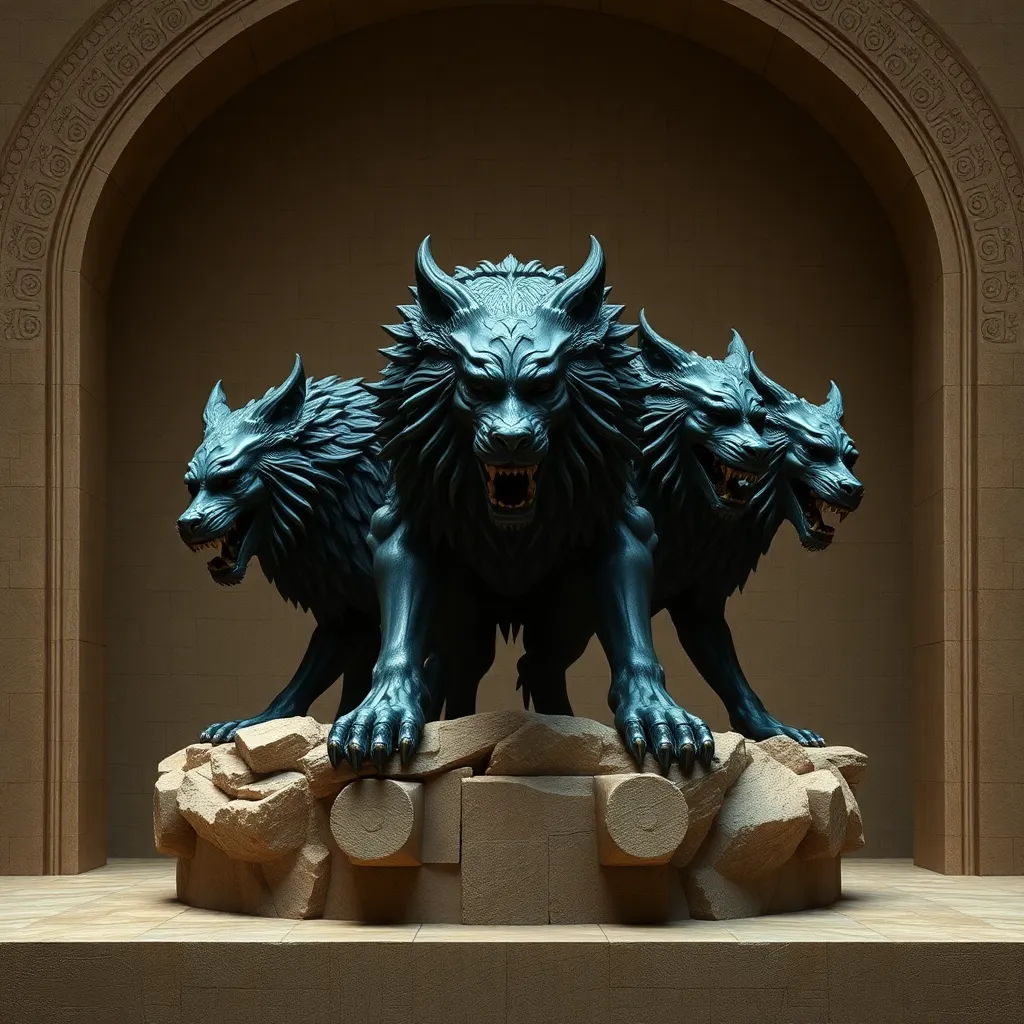Ancient Iranian Art and the Lamassu: Exploring Symbolic Representations and Meaning
I. Introduction
Ancient Iranian art is a rich tapestry that reflects the complex history, culture, and beliefs of one of the world’s oldest civilizations. This art encompasses a variety of forms, including sculpture, pottery, textiles, and architecture, revealing a deep connection to the spiritual and material worlds.
Among the most iconic symbols of ancient Iranian art is the Lamassu, a mythical creature that serves as a guardian and protector. Characterized by its human head, the body of a lion or bull, and the wings of an eagle, the Lamassu embodies the fusion of various animal forms, representing strength and vigilance.
This article aims to explore the symbolic representations and meanings of the Lamassu within the context of ancient Iranian art, examining its origins, cultural significance, and enduring legacy.
II. Historical Context of Ancient Iranian Art
A. Timeline of Ancient Iranian Civilizations
The history of ancient Iranian art is intertwined with several prominent civilizations, including the Elamites, Medes, and Persians. Key periods include:
- Elamite Civilization (c. 2700–539 BCE)
- Median Empire (c. 678–549 BCE)
- Achaemenid Empire (c. 550–330 BCE)
- Parthian Empire (c. 247 BCE–224 CE)
- Sasanian Empire (224–651 CE)
B. Influences from Neighboring Cultures
Ancient Iranian art was significantly influenced by neighboring cultures, including Mesopotamian, Greek, and Central Asian traditions. These interactions led to the amalgamation of styles and techniques, enriching the artistic landscape of ancient Iran.
C. The Role of Religion and Mythology in Art
Religion and mythology were central to ancient Iranian art, with deities, mythical creatures, and religious narratives frequently depicted. The Lamassu, for example, is rooted in Mesopotamian mythology, where it served as a protective figure in temples and palaces.
III. The Lamassu: Origins and Evolution
A. Definition and Description of the Lamassu
The Lamassu is a hybrid creature, typically depicted with a human head, the body of a lion or bull, and large wings. Its imposing stature and intricate carvings convey a sense of majesty and authority, making it a prominent feature in the architectural landscape of ancient Iran.
B. Historical Development of Lamassu Imagery
Initially appearing in Assyrian art, the Lamassu was adopted by the Persians, who infused it with their own cultural significance. Over time, the imagery evolved, incorporating local artistic styles while retaining its protective symbolism.
C. Regional Variations Across Ancient Iran
Different regions in ancient Iran showcased variations of the Lamassu. For instance, in Achaemenid art, the Lamassu was often represented in a more stylized manner, whereas in the Sasanian period, it took on more elaborate forms with intricate detailing.
IV. Symbolism of the Lamassu
A. Protective Functions: Guardianship in Architecture
The Lamassu served as a guardian figure, often placed at the entrances of palaces and temples. Its role was to protect the sacred spaces from evil spirits and to assert the power of the ruler.
B. Symbol of Power and Authority in Rulership
As a symbol of power, the Lamassu was associated with the divine right of kings. Rulers commissioned Lamassu sculptures to reinforce their authority and to project an image of strength and protection over their subjects.
C. Representation of Duality: Human and Animal Traits
The combination of human and animal traits in the Lamassu symbolizes the dual nature of existence—strength coupled with wisdom. This duality reflects the complexity of life and the balance between the physical and spiritual realms.
V. Artistic Techniques and Materials Used
A. Sculptural Techniques: Carving and Relief Work
Ancient Iranian artists employed various sculptural techniques, including high relief and low relief carving. The detailed workmanship involved careful planning and execution, showcasing the skill of artisans in creating lifelike representations.
B. Common Materials: Stone, Clay, and Metal
Artists used a variety of materials for Lamassu sculptures:
- Stone: Limestone and alabaster were popular choices for large sculptures.
- Clay: Used for smaller figures and decorative elements.
- Metal: Bronze and iron were employed for intricate details and smaller items.
C. Innovations in Ancient Iranian Artistry
Ancient Iranian artists were known for their innovations, including the use of perspective in relief work and the incorporation of vibrant colors in pottery and textiles. These advancements contributed to the overall aesthetic appeal of their art.
VI. Lamassu in Architectural Context
A. Placement of Lamassu in Ancient Structures
Lamassu were strategically placed at the entrances of significant structures, serving as both architectural supports and symbolic guardians. Their placement was intentional, designed to impress visitors and convey a sense of grandeur.
B. Case Studies: Notable Sites Featuring Lamassu
Several notable archaeological sites feature Lamassu, including:
- The Palace of Darius at Persepolis
- The Citadel of Kermanshah
- The ruins of Nineveh
C. The Intersection of Art and Architecture
The integration of Lamassu in architecture exemplifies the intersection of art and function. These sculptures not only added aesthetic value but also played a crucial role in the spiritual and political narratives of the time.
VII. Legacy and Influence of Lamassu in Later Cultures
A. Continuation of Lamassu Imagery in Art History
The imagery of the Lamassu continued to resonate in various cultures throughout history, influencing artistic representations in different contexts. Its powerful symbolism has made it a lasting icon in art history.
B. Influence on Persian and Islamic Art
In Persian and Islamic art, the Lamassu inspired motifs and designs, often reinterpreted in new forms. The blending of styles showcases the adaptability of this symbol across cultures and eras.
C. Modern Interpretations and Revivals
Today, the Lamassu continues to inspire artists and designers, appearing in contemporary artworks and architectural designs. Its enduring legacy reflects the timeless nature of its symbolism and artistic significance.
VIII. Conclusion
A. Summary of Key Insights on Lamassu and Ancient Iranian Art
The Lamassu stands as a remarkable testament to the richness of ancient Iranian art and culture. Its multifaceted symbolism encompasses protection, authority, and duality, making it a powerful representation of the values held by ancient civilizations.
B. The Enduring Significance of Symbolic Representations
The significance of the Lamassu extends beyond its physical form; it serves as a reminder of the cultural heritage and artistic achievements of ancient Iran. The continued fascination with this figure highlights the importance of symbolic representations in understanding historical narratives.
C. Call to Further Study and Appreciation of Ancient Iranian Heritage
As we delve into the depths of ancient Iranian art, the Lamassu invites us to explore and appreciate the complexities of a civilization that has shaped human history. Further study of this rich heritage will foster a deeper understanding of our shared cultural legacy.



